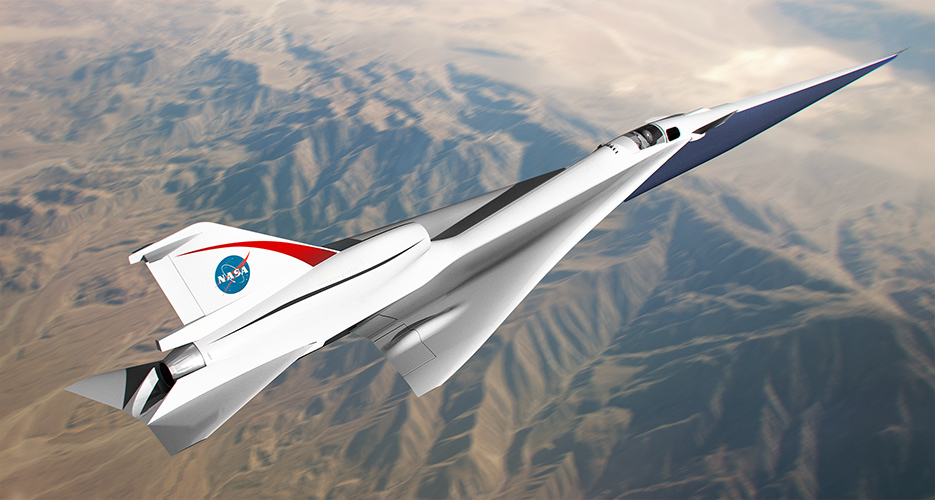Lockheed Martin Skunk Works team, in partnership with NASA, is developing QueSST X-plane to solve one of the persistent challenges of supersonic flight – the sonic boom
In partnership with NASA, the Lockheed Martin Skunk Works team is trying to find a solution to a difficult problem. In fact, although supersonic flight has been achieved before, NASA and Lockheed Martin will make it greener and quieter by means of the Quiet Supersonic Technology (QueSST) X-plane.
According to a company press release, the mission of QueSST is to deliver high-speed flights with revolutionary low-impact sound.
NASA selected a team led by Lockheed Martin to complete a preliminary design for the QueSST X-plane. This endeavor supports NASA’s Commercial Supersonic Technology Project, which aims to better understand acceptable commercial supersonic aircraft sound levels across the country and develop a way for piloted aircraft to fly fast with a low boom.
Noteworthy Lockheed Martin has worked with NASA for more than a decade to develop the tools and technology needed to make environmentally responsible commercial supersonic flight a reality.
Michael Buonanno, the chief engineer for NASA’s QueSST X-plane program, said the foundation was laid from 2010 to 2013 with the N+2 Supersonic Validations Program. “We worked with NASA to develop the necessary design tools and experimental techniques to accurately shape the vehicle so that its sonic-boom signature will be perceived as a sonic heartbeat sound rather than the typical loud double-bang that today’s supersonic aircraft produce,” he said.
The X-plane’s futuristic look includes a long, slender fuselage, a highly swept delta wing, and multiple control surfaces to tailor the distribution of pressure and lift around the vehicle.
“In order to have a low sonic boom, you need to specifically design to have it,” Buonanno said. “It’s a nuanced and detail-oriented task to set up the shape of the vehicle so that the shock waves that result from supersonic flight don’t coalesce and result in that loud double-bang.”
In the airline industry’s current tube-and-wings model, shock waves largely roll off and then meld into a sonic boom. The aerodynamic X-plane, however, is designed to scatter multiple shock waves and minimize their cumulative effect, producing only a rumble or soft thump.
“The idea is that there is no way to avoid a shock wave supersonically,” said Thomas Corke, professor of engineering at the University of Notre Dame. “The [X-plane] design doesn’t eliminate shock, it just minimizes it, so what’s perceived on the ground is almost imperceptible.”

QueSST is designed to fly at Mach 1.4, 55,000 feet above the ground. The aircraft is shaped to separate the shocks and expansions associated with a supersonic flight to reduce the volume of the shaped signature. QueSST’s “heartbeat” will be dramatically quieter than the traditional “N-wave” sonic boom associated with the current supersonic aircraft in flight today. The Skunk Works team has been advancing this technology for the last 20 years as part of multiple efforts.
Photo by Lockheed Martin

